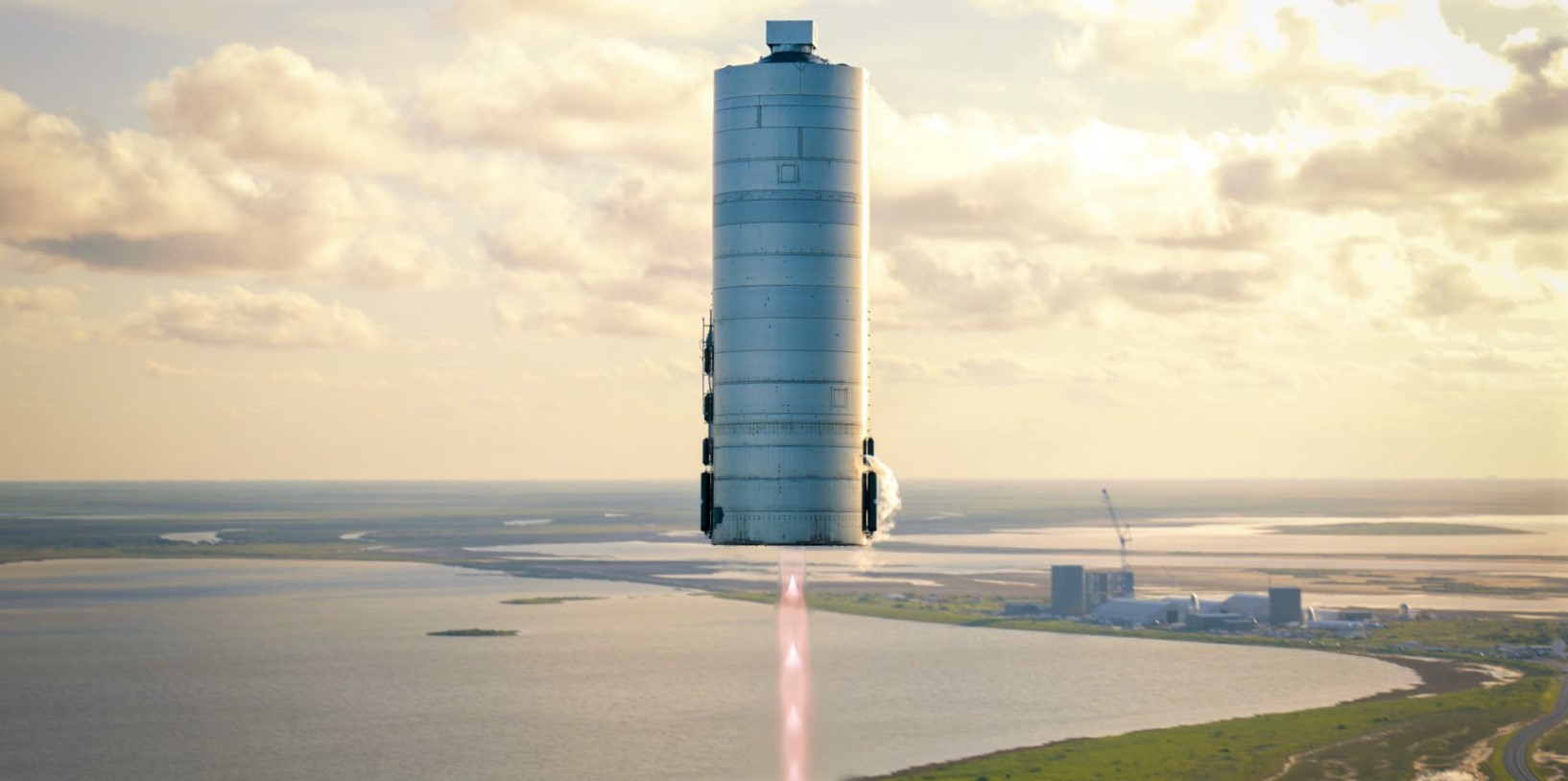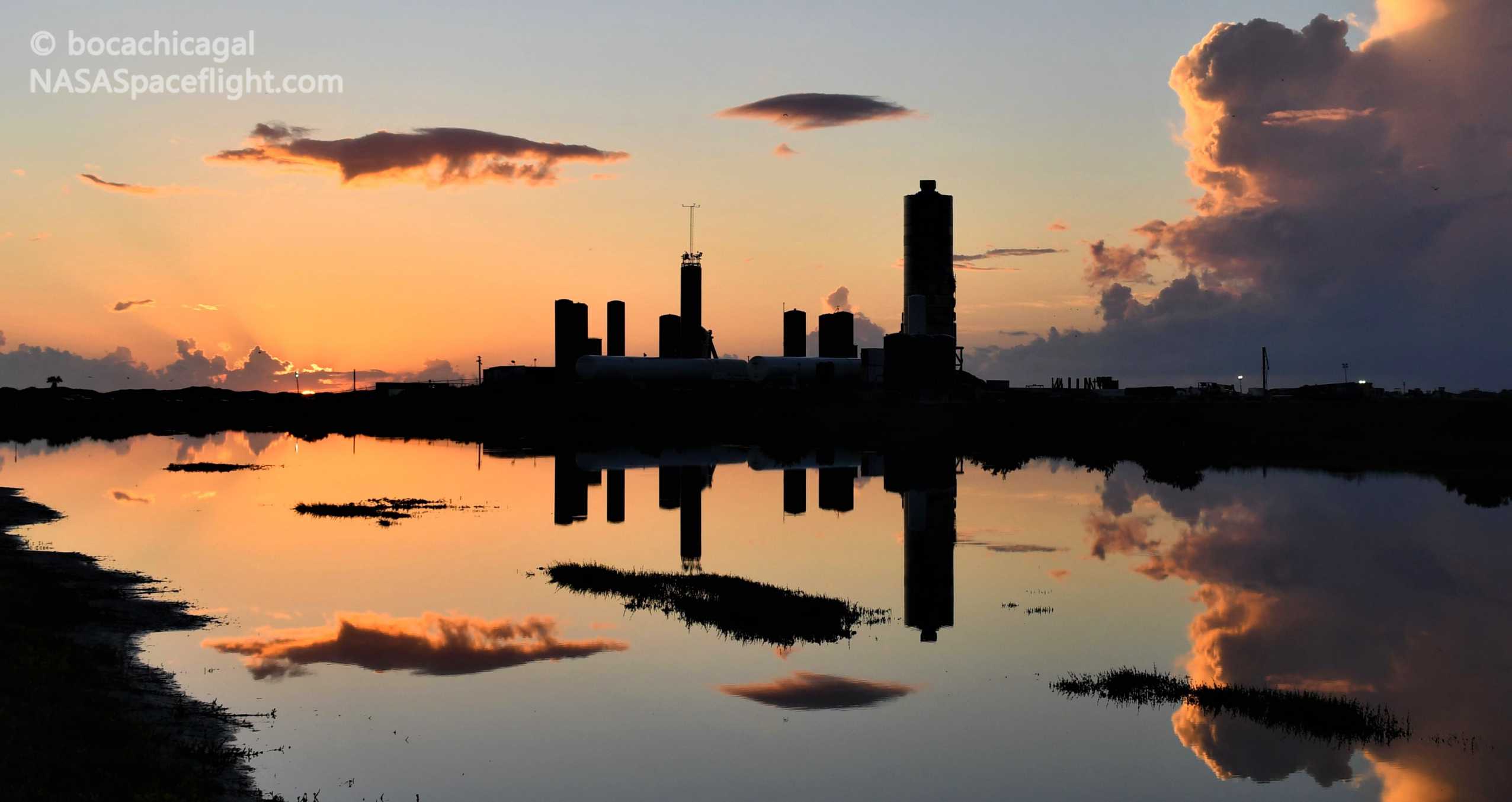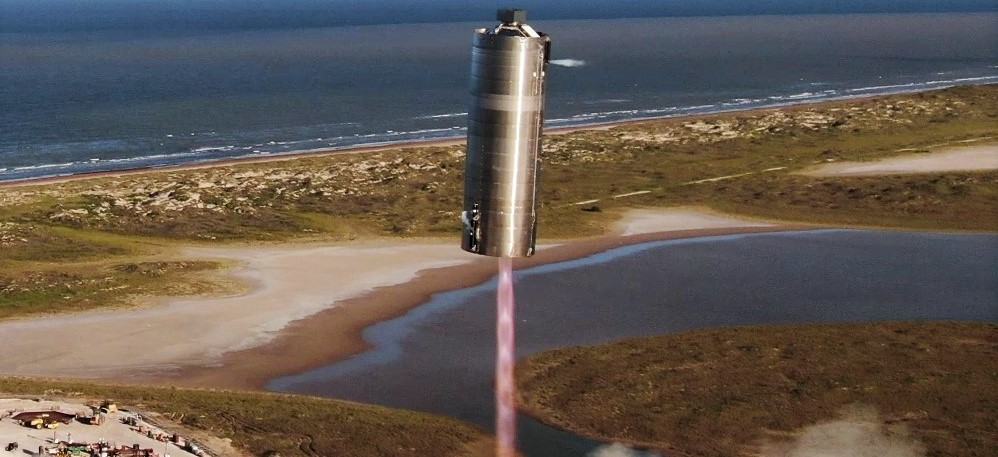

News
SpaceX is hiring a Spaceport resort developer for its Texas rocket factory
SpaceX has big plans to ferry travelers to Mars in the near future, and part of that venture looks to include luxury accommodations while customers spend time with the company on Earth. A recent job board posting for a “Resort Development Manager” has come to light, specifically referring to a project at the launch provider’s Boca Chica Village location in Texas.
“SpaceX is committed to developing this town into a 21st century Spaceport. We are looking for a talented Resort Development Manager to oversee the development of SpaceX’s first resort from inception to completion,” the posting states. Notably, SpaceX is looking for candidates with experience in “high end brand luxury development,” which is perhaps a nod towards the types of customers the company expects to attract.
A small coastal community located on Texas’s southernmost tip, Boca Chica Village is where SpaceX has been developing and testing the company’s Mars-bound rocket named Starship. Facility development at the site has gone quite fast over the last few months, as is the usual Elon Musk-led company fashion, featuring new semi-automated welding machines, upgraded production equipment, and two massive sprung structures (i.e. tents). A ramp in hiring also began in February this year, including a career day to staff production shifts for 24/7 operations.

SpaceX’s rocket factory in Texas has gained a bit of notoriety since moving into the area, specifically when a Starship prototype (SN4) exploded following a static fire test in May this year. However, it looks as though most of the (literal) kinks have been worked out, culminating in a picture-perfect hop test last week. This latest test was preceded by several several prototype and tank tests, and SpaceX is now quickly moving forward with yet another prototype (SN8) build from a different steel alloy altogether.
The Texas and Florida-based rocket maker specifically labeling its new project as a Spaceport may be related to a goal Musk previously referenced. “SpaceX is building floating, superheavy-class spaceports for Mars, moon & hypersonic travel around Earth,” the CEO stated on Twitter in June. He was replying to a tweet describing yet another job board posting, this one for “Offshore Operations Engineers” to work at the Texas site.

SpaceX published concepts for floating launch facilities in 2017 which measured at least 300m (1000 ft) long and about 100m (330 ft) wide, and they are assumed to be the floating ports in question. The size of the intended rockets to be serviced on the pads would also hint towards being several miles off shore for safety purposes. But in another interesting difference, including the “Resort” in the most recent job description may further indicate either an expansion to the rocket island concept or a separate project entirely.
SpaceX is hiring a “Resort Development Manager” to develop the Boca Chica Village in Texas “into a 21st century Spaceport” and the company’s first resort. https://t.co/AEfUaCIVGr pic.twitter.com/rhJqq2rnIV
— Michael Sheetz (@thesheetztweetz) August 10, 2020
A comparable destination may be Spaceport America, the first purpose-built commercial spaceport in the world, located in New Mexico. That facility comprises 6,000 square miles of restricted airspace, a 12,000 foot runway, and vertical launch complexes to support multiple customers needing aerospace testing and launch capabilities. Visitors may only come for guided tours of the Spaceport, however, as it’s closed off to the public for a variety of legal and security reasons. If SpaceX’s Spaceport has similar restrictions, perhaps the Resort will be for space-bound customers and business relations only.
Every autumn since the 2016 International Astronautical Congress (IAC), Musk has presented an annual update on the status of SpaceX’s next-generation Starship launch vehicle. The tradition looks to be continued this September, as indicated in a recent tweet by the CEO, despite challenges brought on by the Coronavirus pandemic. Details about future Resort plans will hopefully be provided at that time.
Elon Musk
Elon Musk confirms Grok 4 launch on July 9 with livestream event
The rollout will be accompanied by a livestream at 8 p.m. Pacific Time.

Elon Musk has officially confirmed that Grok 4, the latest version of xAI’s large language model, will launch on July 9. The rollout will be accompanied by a livestream at 8 p.m. Pacific Time, hosted on xAI’s official account on X.
xAI goes straight to Grok 4
Back in May, leaks indicated that xAI was getting ready to ship Grok 3.5. Considering Musk’s recent comments, however, it appears that the artificial intelligence startup would be focusing on the large language model’s fourth iteration instead. As noted in a Financial Express report, users on X have sighted references to Grok 4 in the lead up to the update’s launch, such as “grok-4-prod-mimic” and “Grok 4 Code.”
Musk’s Grok 4 announcement comes as AI competition intensifies between major players including OpenAI, Google, and xAI. With Musk’s Colossus supercomputer fully operational in Memphis, xAI appears to be accelerating its AI product roadmap.
Musk pushes Grok toward political neutrality
Grok 4’s launch also follows a recent controversy involving political bias, as noted in a CNN report. Last week, Grok responded to a user on X stating that political violence in the U.S. since 2016 had come more from the political right than the left. The chatbot noted in a later reply that its answer was based on information from sources like Reuters, the Journal of Democracy, and University of Maryland studies.
Musk stated that Grok’s response was a “major fail.” “Major fail, as this is objectively false. Grok is parroting legacy media. Working on it,” he wrote in a post on X. By the end of June, Musk noted that he was “grinding all night with the xAI team” and that they were making “good progress.” He also stated that the model “Will be called Grok 4. Release just after July 4th. Needs one more big run for a specialized coding model.”
News
Tesla opens massive solar Supercharger station in California
The Supercharger opened to customers ahead of Fourth of July weekend, while Tesla continues phase two of construction on the site.

Tesla has officially launched the first several Supercharging posts at a massive station in California, notably including solar canopies and grid-scale batteries to offer completely renewable charging.
Last week, Tesla announced on X that it opened the first 84 Supercharger stalls of a planned 168-stall station in Lost Hills, California. Additionally, the massive Supercharger project features 11MW of solar canopies and 10 Megapack batteries for off-grid charging powered entirely by solar energy.
Tesla completed the first phase of the project just days ahead of the busy Fourth of July holiday weekend, adding that initial construction took just eight months. In addition to the remaining charging stalls, Tesla says it’s building a set of lounge areas, renderings of which can be seen below alongside current photos of the site.
Notably, the site also includes V4 charging posts for the company’s latest available charging speeds, and it’s located near the busy junction between I-5 and Highway 46 in Kern County.
“Thank you [Kern County] and [PG&E] for collaboration and approvals,” Tesla wrote in a follow-up post.

Credit: Tesla Charging | X

Credit: Tesla Charging | X

Credit: Tesla Charging | X

Credit: Tesla Charging | X
Tesla Supercharger Maps for North America, Europe, and Asia pic.twitter.com/0U5r0XRPyo
— TESLARATI (@Teslarati) July 2, 2025
READ MORE ON TESLA SUPERCHARGERS: Tesla launches ultra-fast V4 Superchargers in China for the first time
Testing at the LA Diner, plus Musk update on potential Tesla solar Gigafactory
The huge Tesla Supercharger station completed phase one of construction fairly quickly, especially given how long Tesla has been working on its unique Los Angeles diner, drive-in, and Supercharger location. Still, the company was seen performing some testing at the nearly-completed charging station earlier this month, and will reportedly be holding a job fair.
Elon Musk also responded on Monday morning to a post on X, suggesting that Tesla is “thinking about” building a U.S.-based solar Gigafactory in order to help support increased power needs with AI growth, and to bolster domestic solar production.
Tesla is building a new UFO-inspired Supercharger in the heart of Alien country
News
Tesla driver walks away from major accident with minor injuries
The driver sustained only minor injuries, and the exact cause of the crash remains under investigation.

The driver of a Tesla Model Y survived and walked away from a harrowing accident on Monday in California, only sustaining minor injuries despite the vehicle being impaled by a guardrail.
On Monday morning around 4:34 a.m., the Los Banos division of the California Highway Patrol (CHP) responded to the accident on I-5 near Panoche Road, involving a 23-year-old in a Tesla Model Y. According to a post on social media, the driver veered off the road for unknown reasons in the northbound lane, before crashing directly into the guardrail and impaling the vehicle.
You can read the full message and photos from Los Banos CHP below, as were shared in a Facebook post on Monday afternoon.
This morning a Tesla model y was traveling in the #1 northbound lane of I-5 north of Panoche Rd. For unknown reasons driver allowed V-1 to veer off the roadway, travel through a dirt center divide, and crashed into the fixed metal guardrail. Lucky for the driver he only sustained minor injuries and was able to walk away. Driving a vehicle requires 100% attention to the road. Avoid distractions and focus on driving.

Credit: CHP Los Banos (via Facebook)

Credit: CHP Los Banos (via Facebook)

Credit: CHP Los Banos (via Facebook)
In a statement to SFGate, CHP officer Myles Anderson said that the driver only sustained minor injuries, while no arrests are made and drugs and alcohol are not suspected to have been involved. The report also notes that Tesla’s “cruise control and lane assistance features” were activated, according to Anderson. However, it’s not entirely clear if this is referring to Supervised Full Self-Driving (FSD), or to the cruise control and lane assist features baked into Autopilot.
At the time of writing, CHP has not yet responded to Teslarati’s request for clarification and additional details on the matter.
Tesla Crash Safety Ratings across its lineup: pic.twitter.com/ny30R7ceji
— TESLARATI (@Teslarati) July 1, 2025
READ MORE ON TESLA SAFETY: Tesla rolls out crucial new safety feature aimed at saving children
The news comes after Tesla has touted its vehicles as incredibly safe for many years. In December, for example, the company highlighted receiving top safety scores from regulators on four different continents throughout the world, including from the National Highway Traffic Safety Administration (NHTSA) and the Insurance Institute of Highway Safety (IIHS) in the U.S.
Tesla has also listed the goal of making its vehicles the safest on the road throughout the years, both in the overall design of its vehicles and in its Autopilot and Full Self-Driving (FSD) programs.
Tesla Model 3 ranks as the safest new car in Europe for 2025, per Euro NCAP tests
-

 Elon Musk1 week ago
Elon Musk1 week agoTesla investors will be shocked by Jim Cramer’s latest assessment
-

 News2 weeks ago
News2 weeks agoTesla Robotaxi’s biggest challenge seems to be this one thing
-

 News2 weeks ago
News2 weeks agoWatch the first true Tesla Robotaxi intervention by safety monitor
-

 Elon Musk2 weeks ago
Elon Musk2 weeks agoA Tesla just delivered itself to a customer autonomously, Elon Musk confirms
-

 News2 weeks ago
News2 weeks agoTesla Robotaxi rollout proves that Elon Musk still delivers, even if it’s late
-

 Elon Musk2 weeks ago
Elon Musk2 weeks agoxAI welcomes Memphis pollution results, environmental groups push back
-

 Elon Musk2 weeks ago
Elon Musk2 weeks agoElon Musk commends Tesla team on successful Robotaxi launch
-

 Elon Musk2 weeks ago
Elon Musk2 weeks agoElon Musk confirms Tesla Optimus V3 already uses Grok voice AI

















